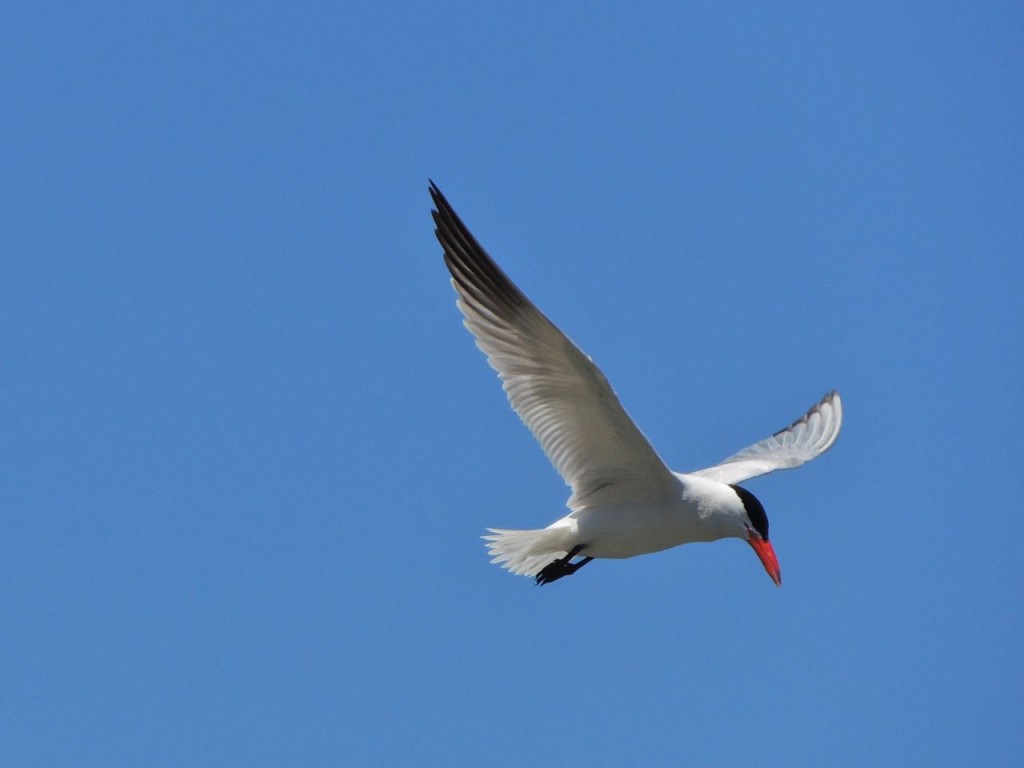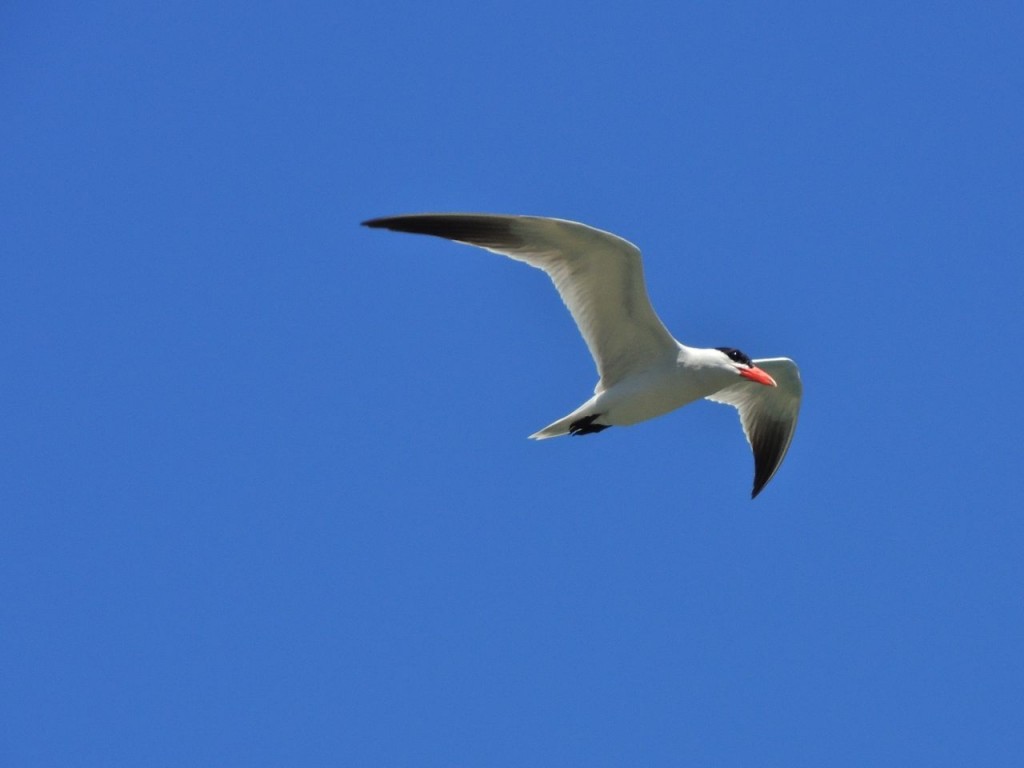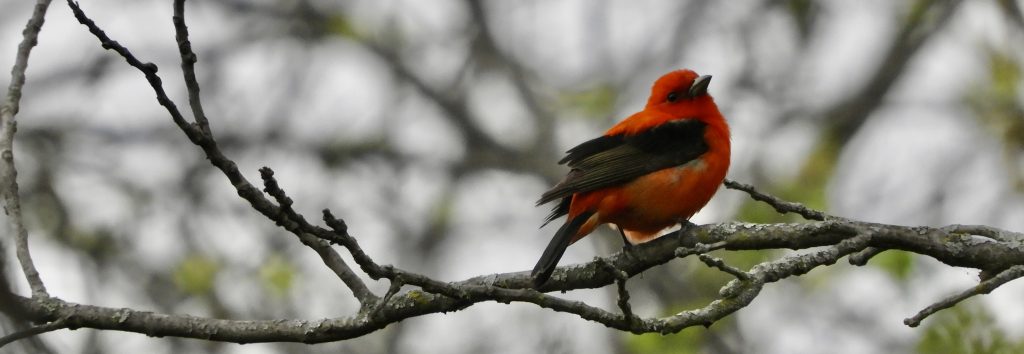 Princess Point, Hamilton. ON. May 12, 2024. I witnessed something altogether new to me today, bird behaviour I’d never seen before. I had just started a transect on a very busy and birdy May morning and was making my way along the woodland edge of a wide grassy park. I was struggling to sort out the almost overwhelming variety of bird song and sound when I caught sight of different movement. I’d read about it before so immediately knew I was seeing the courtship flight of a male Ruby-throated Hummingbird.
Princess Point, Hamilton. ON. May 12, 2024. I witnessed something altogether new to me today, bird behaviour I’d never seen before. I had just started a transect on a very busy and birdy May morning and was making my way along the woodland edge of a wide grassy park. I was struggling to sort out the almost overwhelming variety of bird song and sound when I caught sight of different movement. I’d read about it before so immediately knew I was seeing the courtship flight of a male Ruby-throated Hummingbird.
Male hummingbirds of many species perform dive-displays for their females. The displays usually start with the male hovering close to his mate before climbing high then diving steeply in a pattern which is distinctive to his species. Ruby-throated Hummingbirds do relatively shallow U-shaped dives, other species’ dive tighter and steeper. Today’s bird’s dives were perhaps 3 or 4 meters wide and deep, after a few swings he retired to a perch to see whether she was impressed. Here he is, My Bird of the Day in a day full of birds.
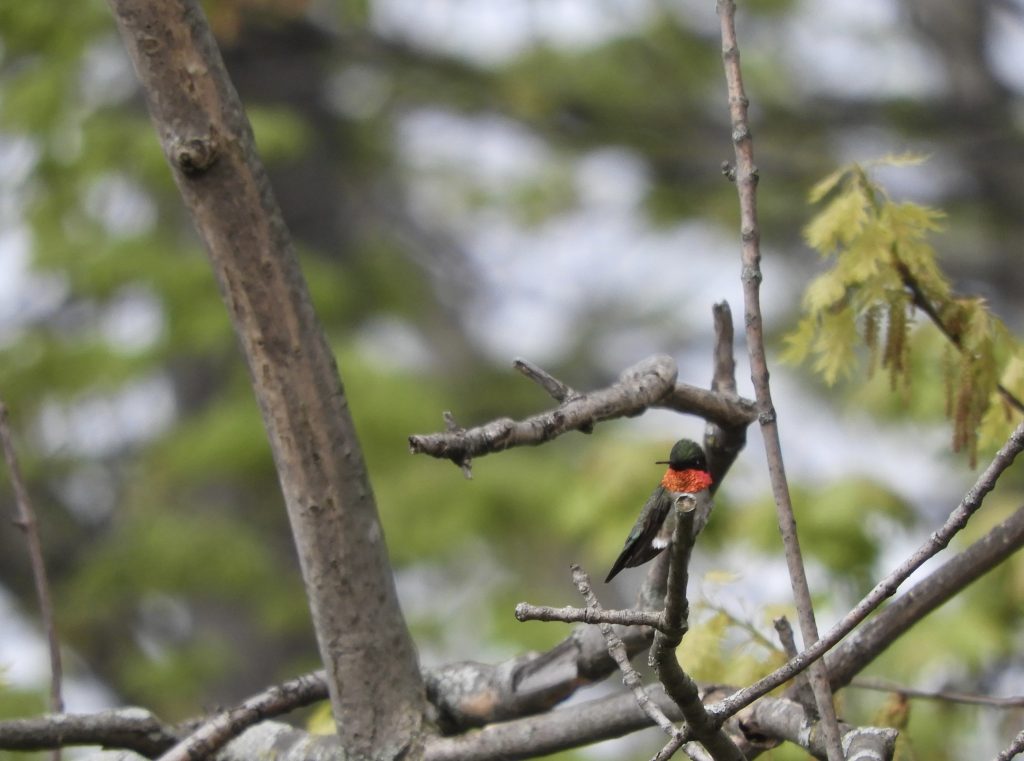
There was much more to stop me in my tracks this morning. A Yellow Warbler who had found his territory for the summer and was patrolling it from post to post. Two Eastern Kingbirds, evidently a pair, were busy assessing trees along the shoreline seeking a nest site I assume and close to a pair of Warbling Vireos who had already started construction of their nest, a masterpiece of woven grasses suspended from forks of horizontal twigs.
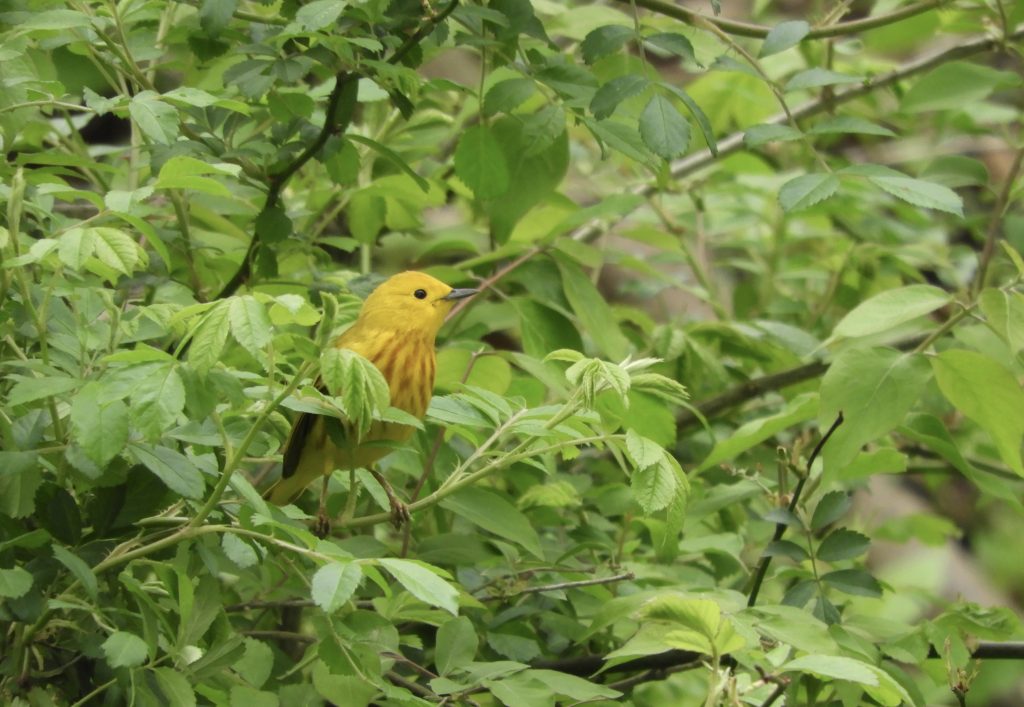
Had it not been for the display behaviour of the Ruby-throated Hummingbird, I think the day would have belonged to a vocal Scarlet Tanager. It is a strikingly handsome summer visitor (the male anyway) and almost common in the hardwood forests around here. I hardly ever see them because they hang around high in the canopy level of those woodlands. But I do remember my first sighting of one when I was birding a trail along the top edge of a deep and narrow valley. From that angle I looked down upon treetops and out of the May greenery popped a male tanager, I could hardly believe the intensity of scarlet; an intensity that today’s more modest digital cameras sometimes have trouble rendering properly.
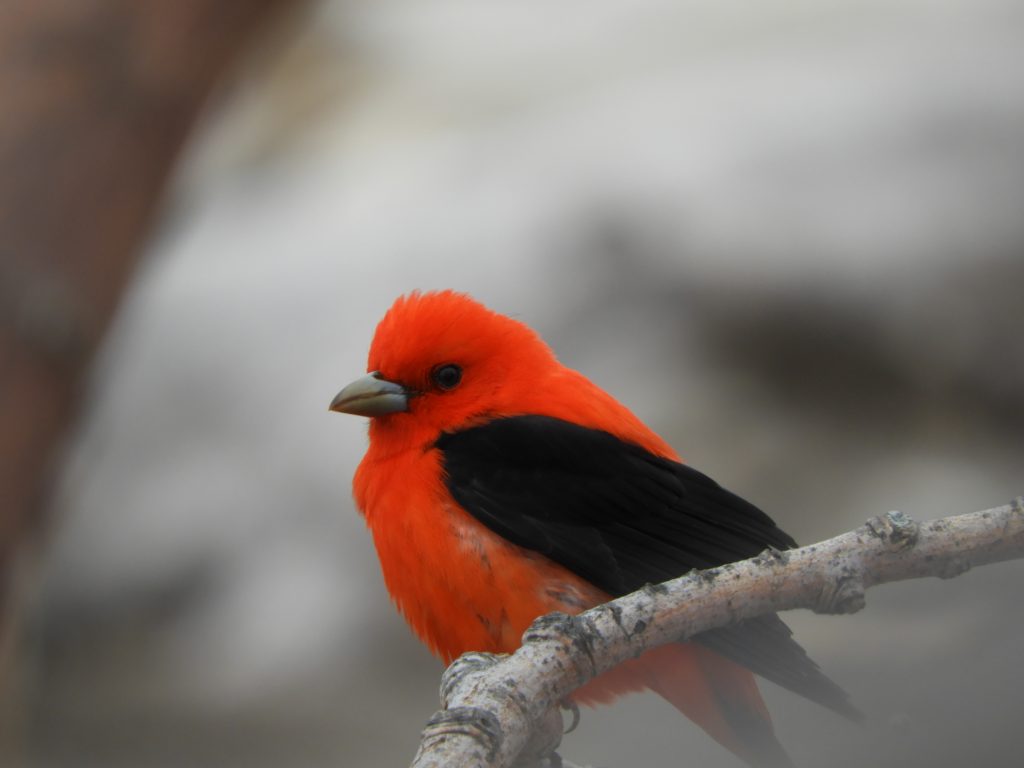
It was a challenging day to be a birder, almost too much to see, hear and process and I’m told there will be a couple more big migration nights ahead.
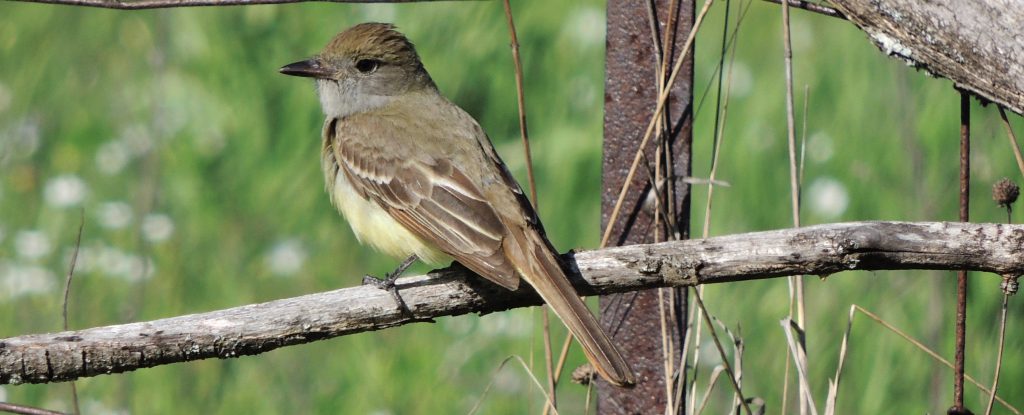 Hendrie Valley, Burlington. ON. May 1, 2024. May! The biggest birding month. We’ve been greeting spring migrants for several weeks, especially thoughout April, but nothing can hold a candle to May.
Hendrie Valley, Burlington. ON. May 1, 2024. May! The biggest birding month. We’ve been greeting spring migrants for several weeks, especially thoughout April, but nothing can hold a candle to May.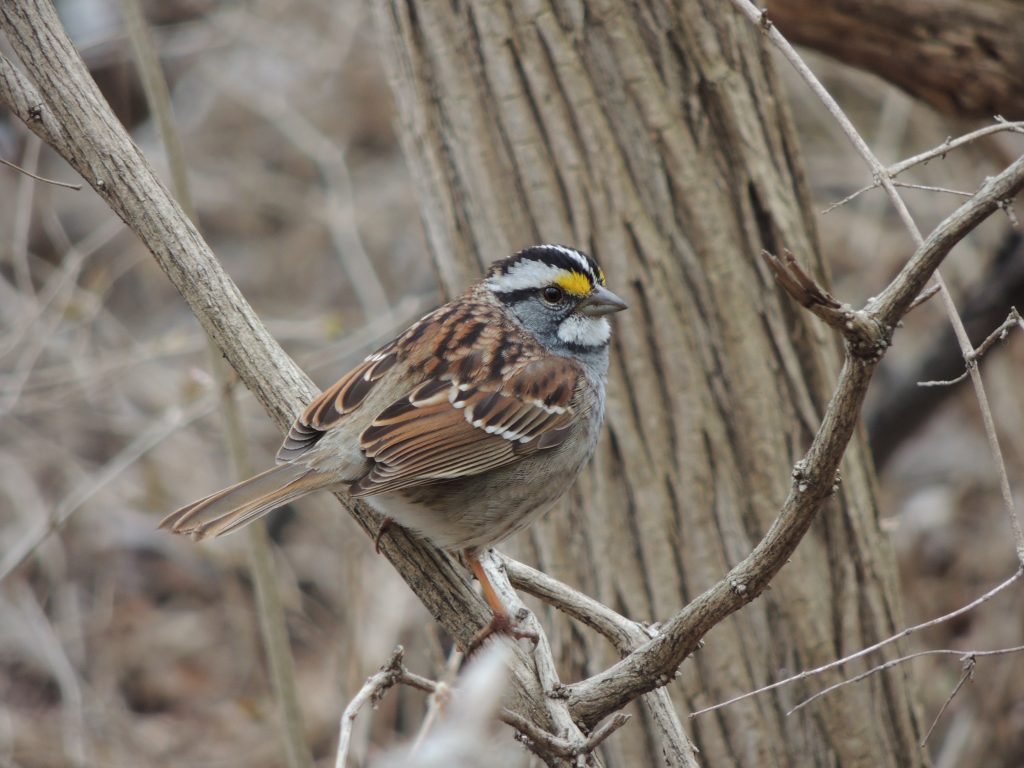
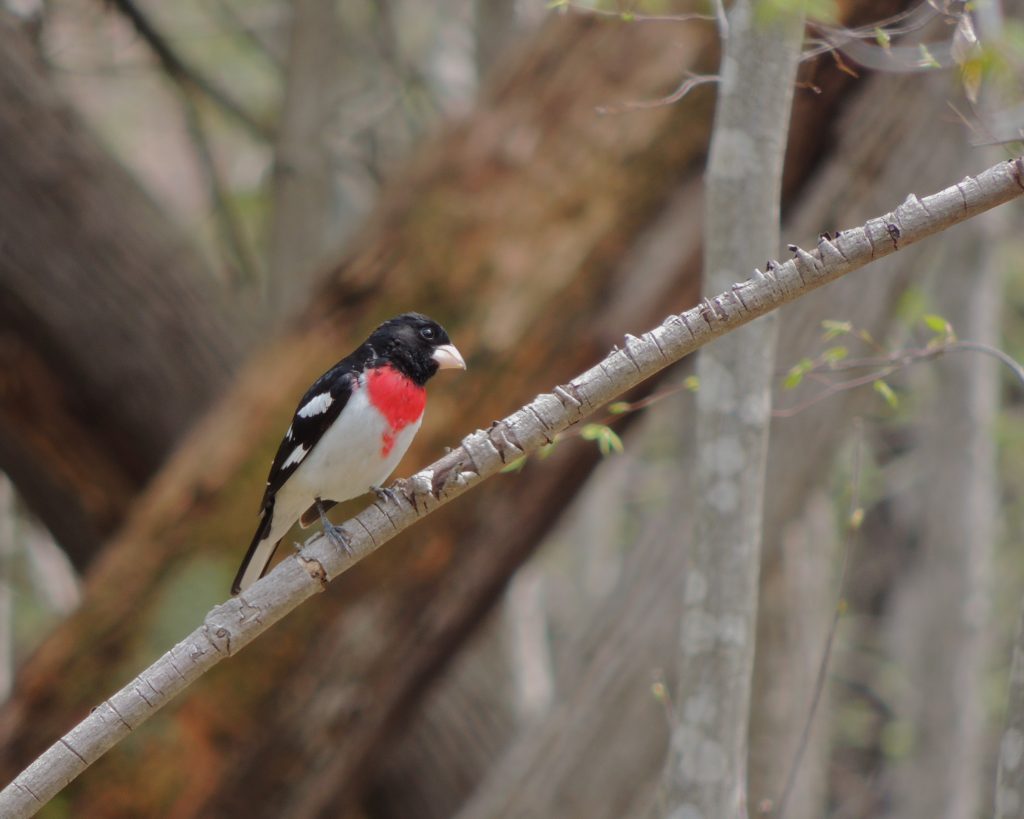
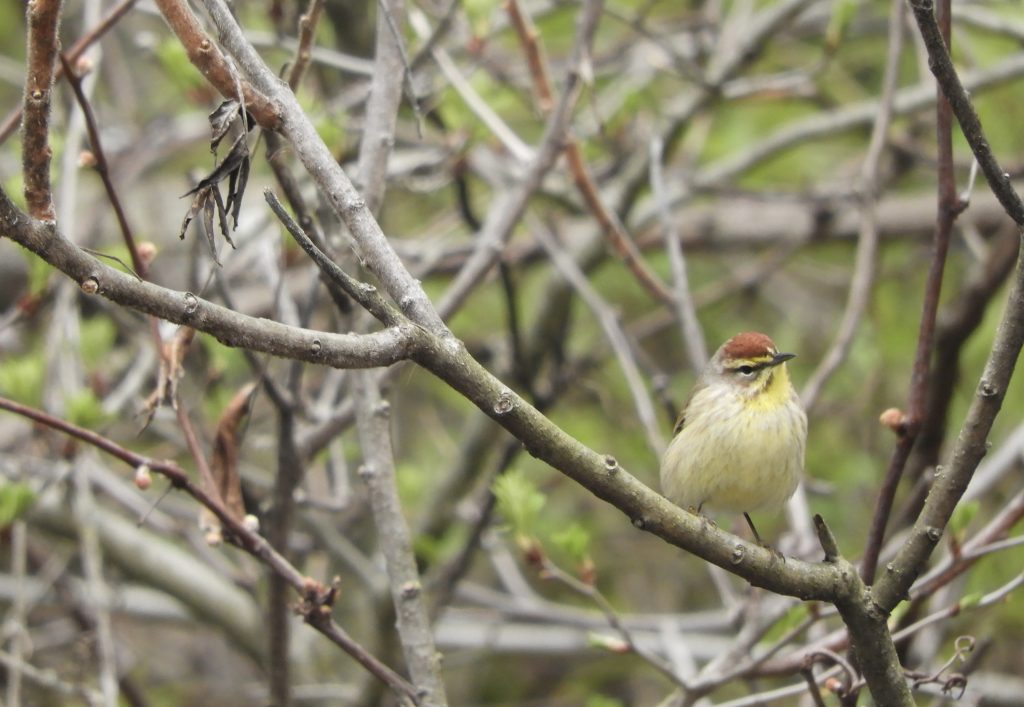
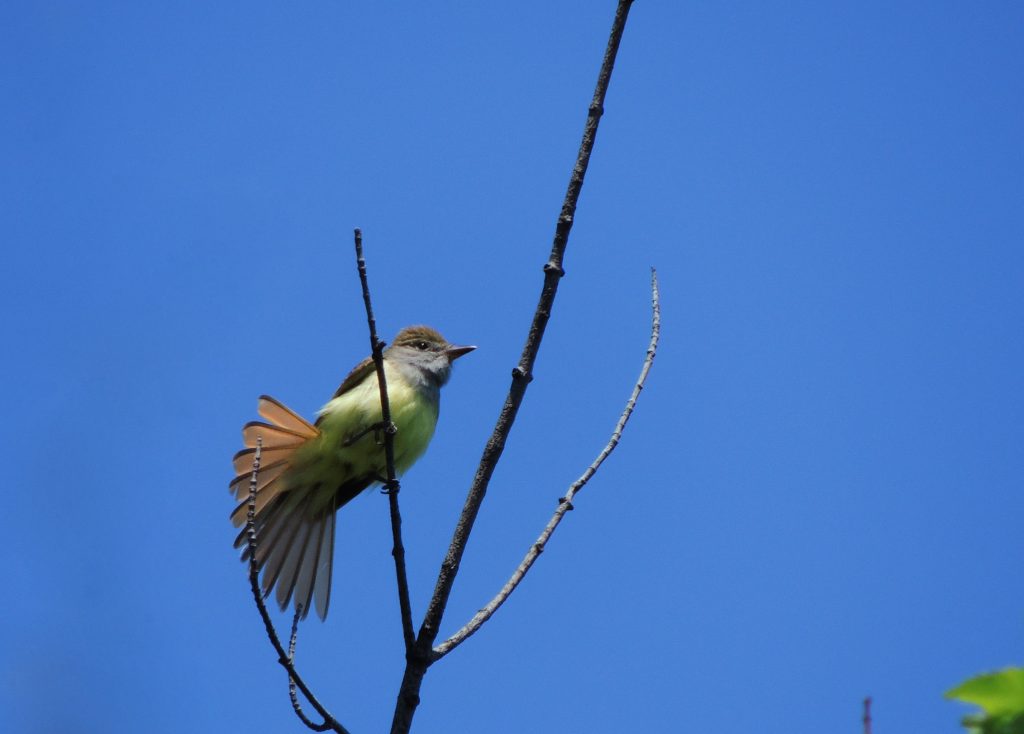
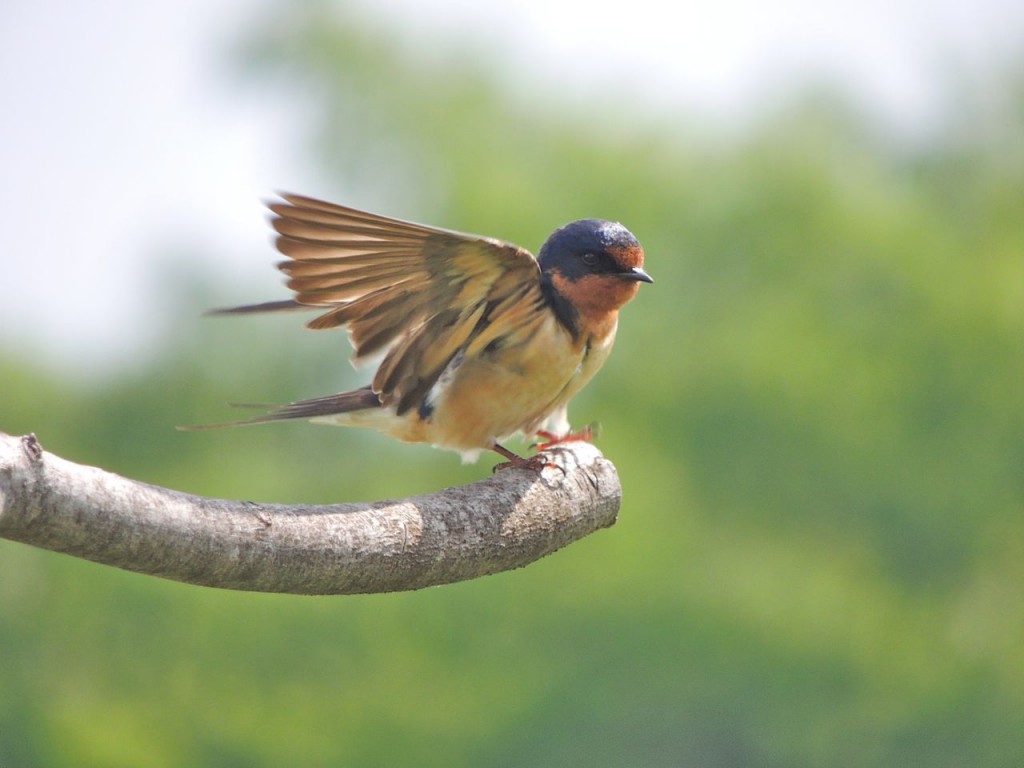
 Princess Point, Hamilton. ON. April 20, 2024. Many decades ago as a recent immigrant, I was often at a loss to identify so many new-to-me birds. I’d been a casual and ill-equipped birder in my English youth but getting settled in Canada had led to paying much more attention to birds, as well as getting married, paying rent and other signs of adulthood of course. I often think back to one spring day and being confounded by little birds that looked for all the world like warblers yet didn’t match anything in my field guide. They were small, olive drab, showed a pale wing bar, and flitted and foraged endlessly. I thumbed back and forth through Peterson’s warbler illustrations. Then, for a just moment, one of them showed a bright crimson crown-patch. Now I had something I could hold on to. I was familiar with the Goldcrests and Firecrests of Europe and these little things were their lookalikes, the closely related Ruby-crowned Kinglets!
Princess Point, Hamilton. ON. April 20, 2024. Many decades ago as a recent immigrant, I was often at a loss to identify so many new-to-me birds. I’d been a casual and ill-equipped birder in my English youth but getting settled in Canada had led to paying much more attention to birds, as well as getting married, paying rent and other signs of adulthood of course. I often think back to one spring day and being confounded by little birds that looked for all the world like warblers yet didn’t match anything in my field guide. They were small, olive drab, showed a pale wing bar, and flitted and foraged endlessly. I thumbed back and forth through Peterson’s warbler illustrations. Then, for a just moment, one of them showed a bright crimson crown-patch. Now I had something I could hold on to. I was familiar with the Goldcrests and Firecrests of Europe and these little things were their lookalikes, the closely related Ruby-crowned Kinglets!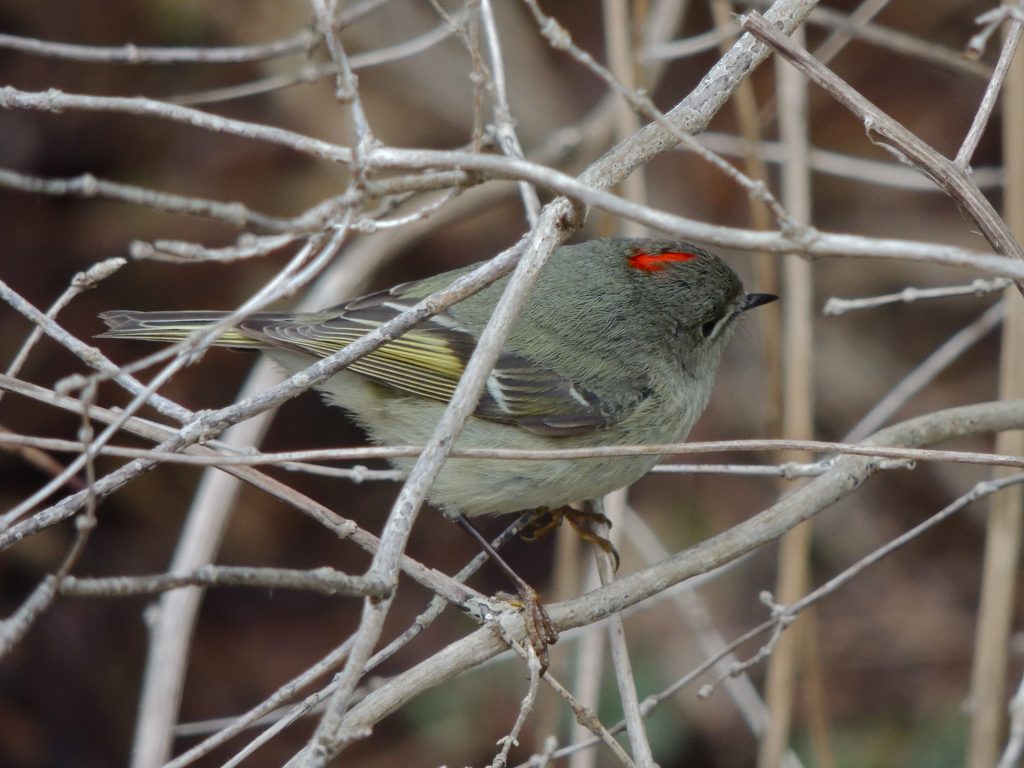

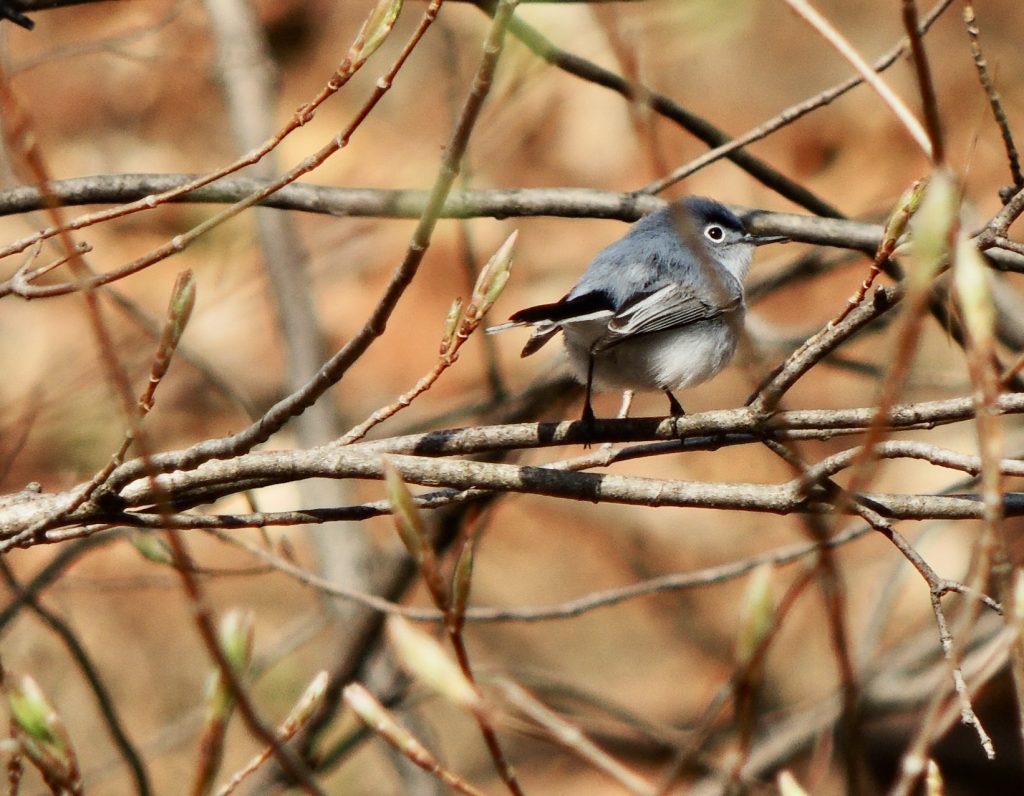
 Princess Point, Hamilton. ON. April 13, 2024. Caught by conflicting promises I tried to squeeze in today’s transect by starting at 7:30 but rain put paid to that. You can’t realistically blame the weather; it’s always been around but it sure complicated things and I found myself having to start an hour later and in Force 6 winds. Benignly labeled a Strong Breeze, Force 6 is ‘Large branches in motion; whistling heard in telegraph wires; umbrellas used with difficulty.” To all of that at six degrees C. I can only add that it made my eyes water, nose drip and knuckles stiffen.
Princess Point, Hamilton. ON. April 13, 2024. Caught by conflicting promises I tried to squeeze in today’s transect by starting at 7:30 but rain put paid to that. You can’t realistically blame the weather; it’s always been around but it sure complicated things and I found myself having to start an hour later and in Force 6 winds. Benignly labeled a Strong Breeze, Force 6 is ‘Large branches in motion; whistling heard in telegraph wires; umbrellas used with difficulty.” To all of that at six degrees C. I can only add that it made my eyes water, nose drip and knuckles stiffen.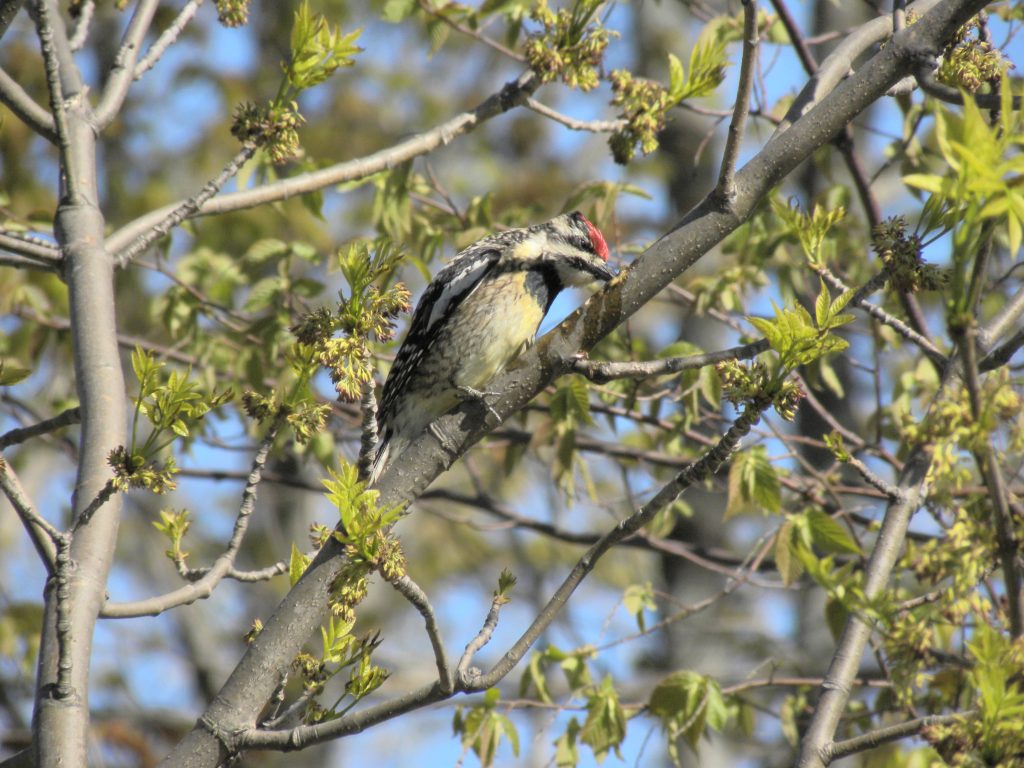
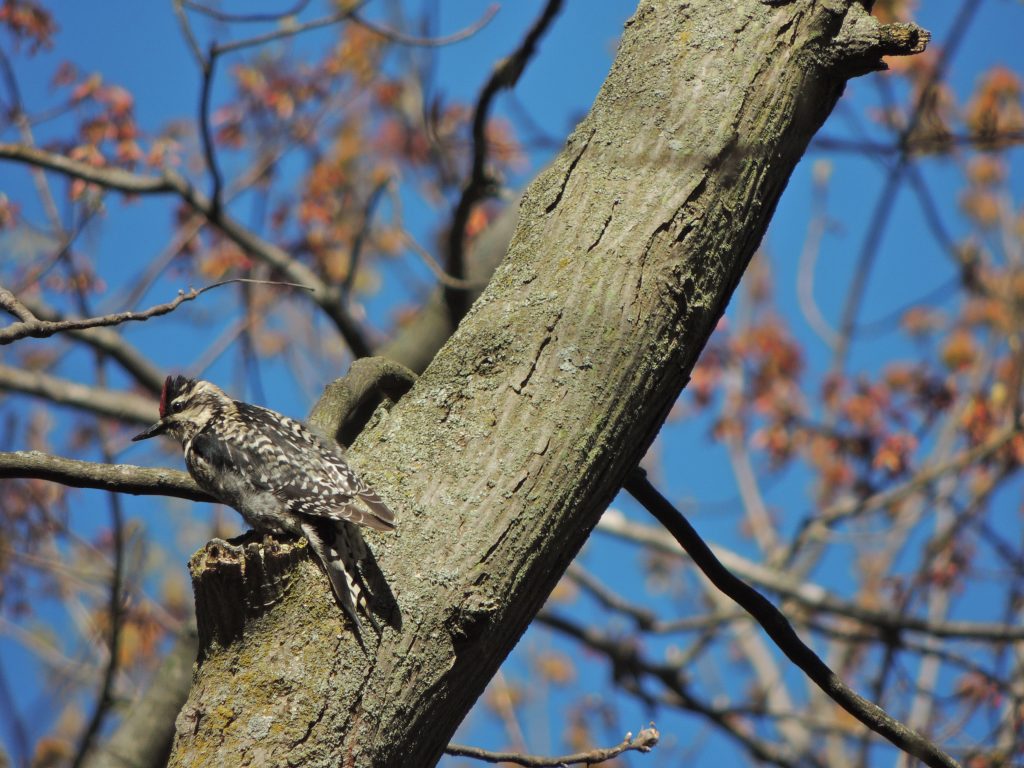
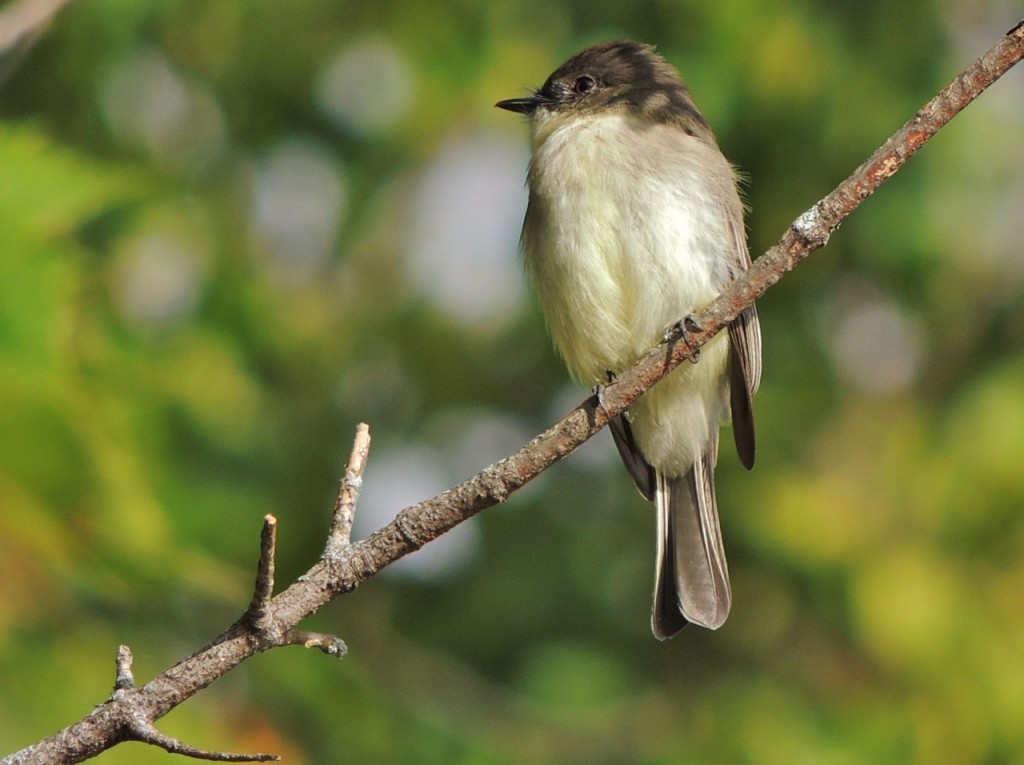
 Princess Point, Hamilton. ON. April 10, 2024. At the right time and place you can watch migration happen, literally on the fly, but most of it goes unseen. Overnight they move, flying hundreds of miles while you sleep. They’re there to greet you next morning; it happened to me today, the greeting that is not the flying.
Princess Point, Hamilton. ON. April 10, 2024. At the right time and place you can watch migration happen, literally on the fly, but most of it goes unseen. Overnight they move, flying hundreds of miles while you sleep. They’re there to greet you next morning; it happened to me today, the greeting that is not the flying.